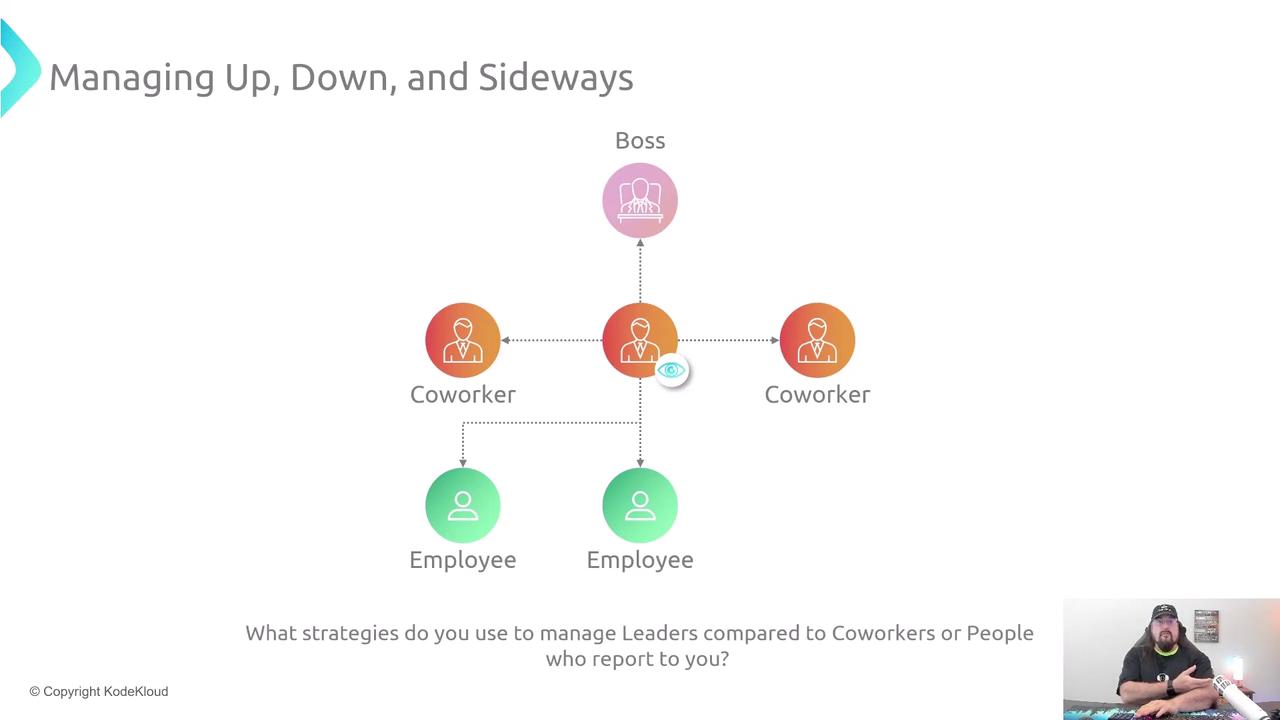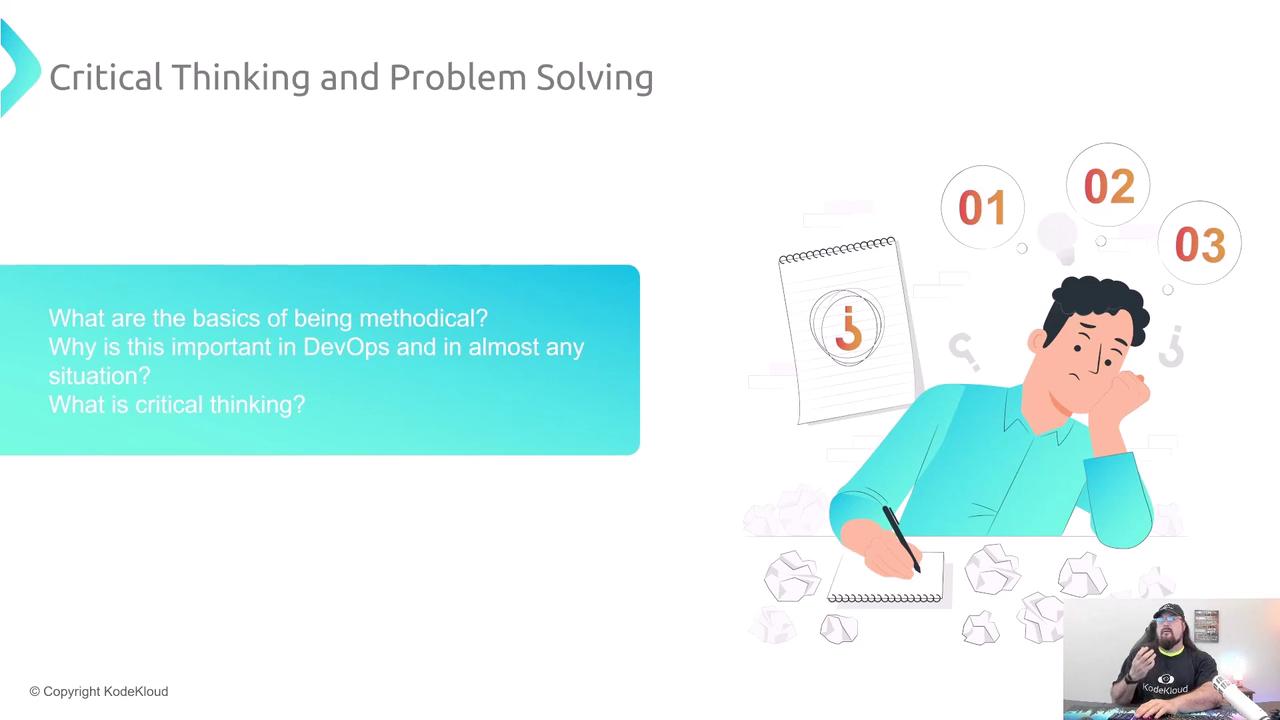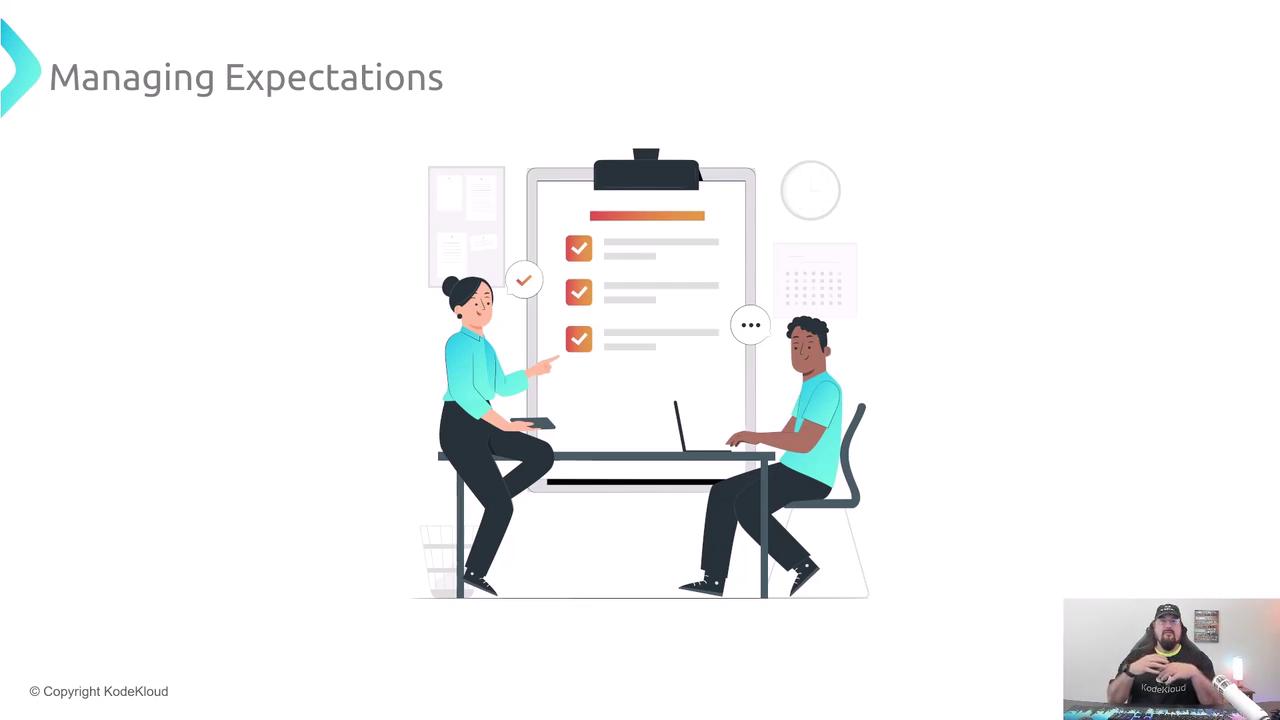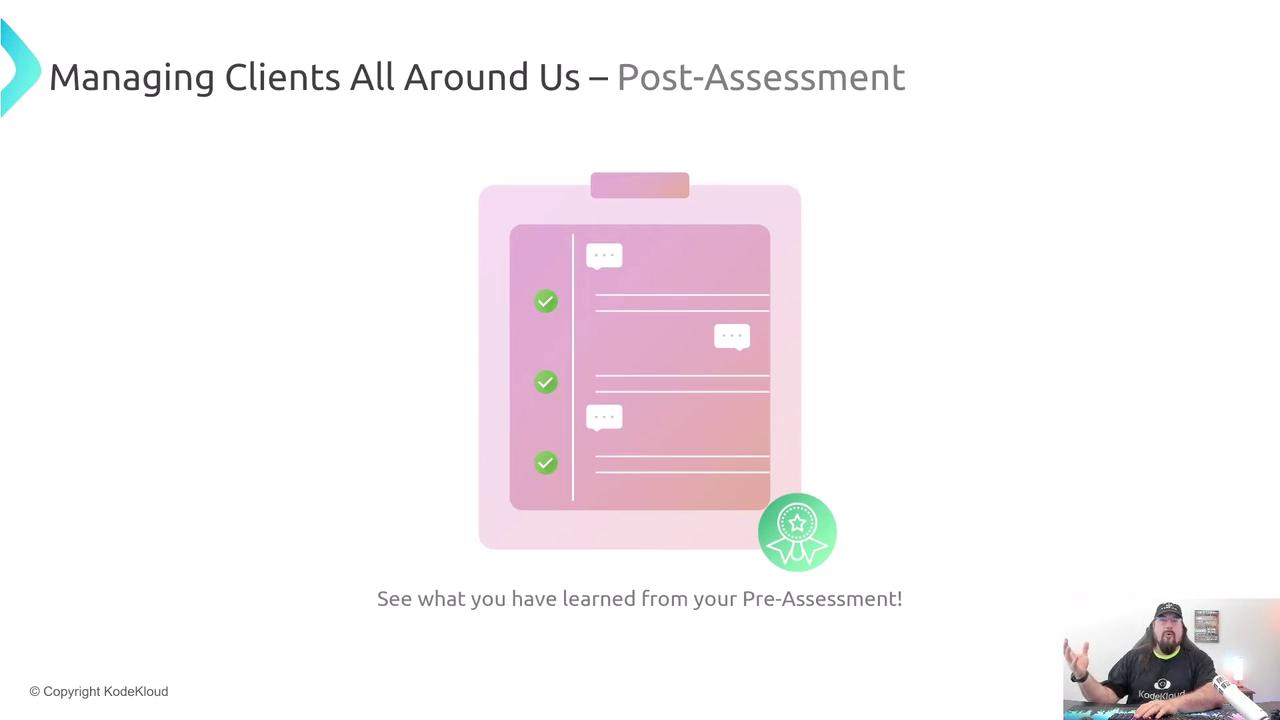Enhancing Soft Skills for DevOps Engineers: Essential Non-Technical Skills to Thrive
Consulting and Client Management
Section Agenda
Welcome to this lesson on client management for DevOps professionals. Effective client engagement—both internal and external—is essential to deliver value, solve problems, and build strong working relationships. In this session, we will cover:
- Pre-Assessment
- Identifying Your Clients
- Managing Up, Down, Across, and Out
- Critical Thinking & Problem Solving
- Managing Expectations
- Negotiating Conflict
- Post-Assessment
1. Pre-Assessment
Before we begin, reflect on your current client management approach:
- Do you treat every stakeholder as a client?
- How effectively are you meeting their goals and expectations?
- Are you adapting your communication style for different audiences?
Note
Taking a moment to self-assess ensures you focus on areas for growth throughout this lesson.
2. Identifying Your Clients
In DevOps, “clients” include anyone who relies on your work or services. Internally, this could be your manager, peers, or direct reports. Externally, you may engage with vendors, partners, or end users.
| Client Type | Role | Examples |
|---|---|---|
| Internal | Manager, coworkers, team members | Project sponsor, QA engineer |
| External | Vendors, partners, customers | Cloud provider, application users |

Key questions to ask yourself:
- Who are your internal clients?
- Who are your external clients?
- What unique needs does each audience have?
3. Managing Up, Down, Across, and Out
Tailoring your approach based on the direction of the relationship helps you communicate more effectively.
| Direction | Audience | Key Strategy |
|---|---|---|
| Managing Up | Your manager | Focus on outcomes, strategic alignment |
| Managing Across | Peers and coworkers | Emphasize collaboration and shared ownership |
| Managing Down | Direct reports | Provide clear guidance, feedback, recognition |
| Managing Out | Vendors and customers | Prioritize value delivery and trust-building |

Tips for success:
- With leaders, link your work to business impact.
- With peers, build consensus and share credit.
- With direct reports, set clear expectations and celebrate wins.
- With external clients, maintain transparency and reliability.
4. Critical Thinking & Problem Solving
A structured approach to problem solving ensures you address real needs and deliver robust solutions:
- Break down complex issues into smaller components.
- Analyze root causes before proposing fixes.
- Validate assumptions with data or experiments.
- Iterate quickly using feedback.
Note
A DevOps mindset—collaboration, automation, and continuous improvement—strengthens your problem-solving toolkit. For more on DevOps principles, see What is DevOps?

Reflect on your process:
- What steps do you follow when challenges arise?
- How often do you test your assumptions?
- How can DevOps practices accelerate your resolution?
5. Managing Expectations
Clear expectations are the foundation of trust and successful delivery.
Strategies to align on outcomes:
- Define scope and requirements in writing.
- Schedule consistent status updates and demos.
- Flag potential risks or scope changes early.

Warning
Unmanaged scope changes (scope creep) can derail timelines and budgets. Always document adjustments and confirm approvals.
6. Negotiating Conflict
Conflict is a natural part of teamwork and client engagement. Approach it by:
- Actively listening to understand concerns.
- Identifying shared interests and goals.
- Co-creating solutions that satisfy all parties.
We’ll walk through real-world scenarios demonstrating conflict negotiation with peers, leaders, subordinates, and vendors.
7. Post-Assessment
Review your learning and plan next steps:

- How has your definition of “client” evolved?
- Which strategies will you apply for different audiences?
- What conflict-resolution techniques will you practice first?
Key Takeaways
- Treat every stakeholder—internal and external—as a client.
- Adapt your management style when engaging up, down, across, and out.
- Apply critical thinking and a DevOps mindset to solve problems efficiently.
- Maintain transparent communication to manage expectations.
- Use collaborative techniques to negotiate and resolve conflicts.
References
Watch Video
Watch video content